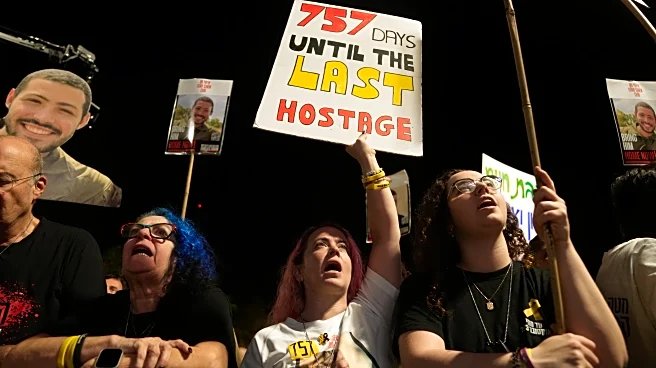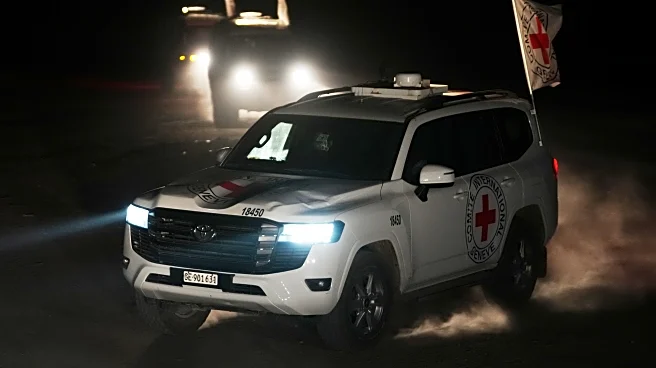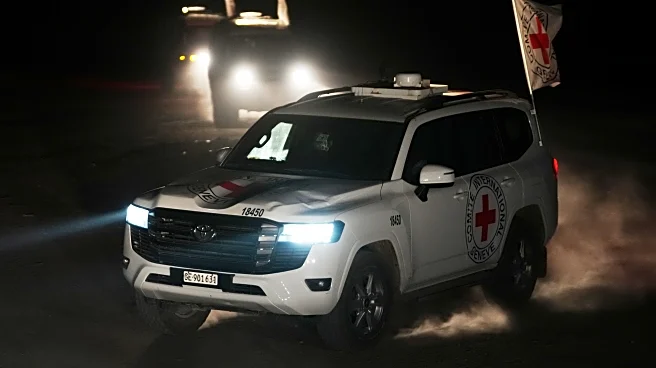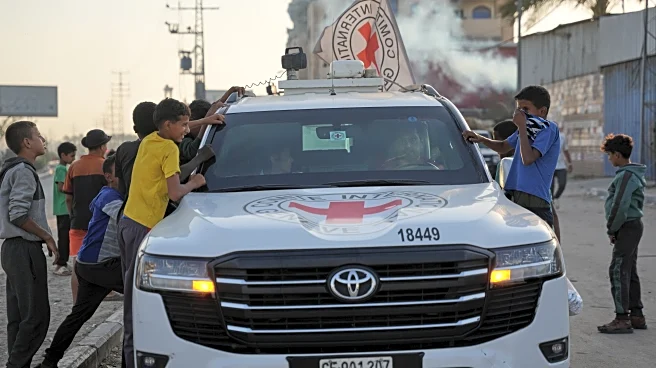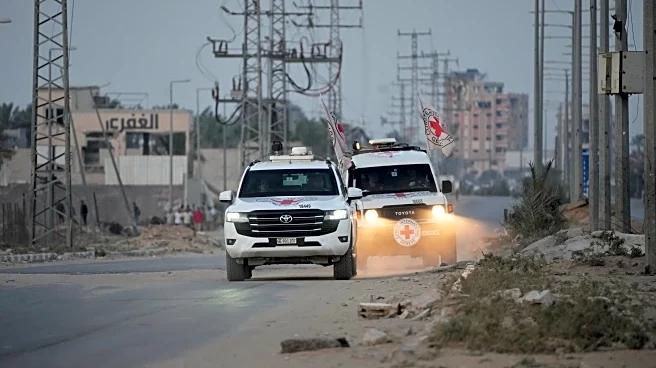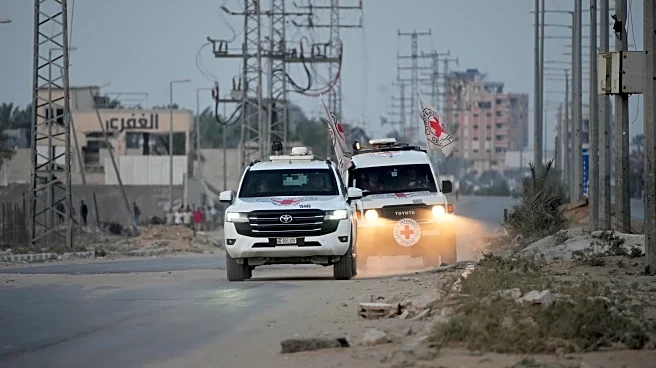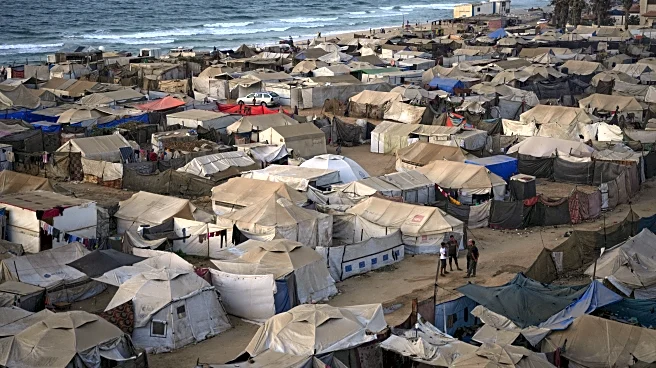JERUSALEM (AP) — Palestinian militants have so far released the remains of 20 hostages that were held in Gaza for the past two years as part of the ceasefire agreement in the Israel-Hamas war. But the process
of returning the bodies of the last eight remaining hostages, as called for under the truce deal, is progressing slowly, with militants releasing just one or two bodies every few days.
Hamas says it has not been able to reach all of the remains because they are buried under rubble left behind by Israel’s two-year offensive in the Gaza Strip. Israel has accused the militants of dragging their feet and threatened to resume military operations or withhold humanitarian aid if all of the remains are not returned.
In the most recent release, Hamas returned the bodies of three troops killed during its Oct. 7, 2023 attack on southern Israel. Israel's military said they were identified as hostages Omer Neutra, Oz Daniel and Col. Assaf Hamami.
In return, Israel has so far released the bodies of 225 Palestinians back to Gaza. Israel has not provided any details on their identities, and it is unclear if they were killed in Israel during the attack on Oct. 7, Palestinian detainees who died in Israeli custody, or bodies that were taken from Gaza by Israeli troops during the war. Health officials in Gaza have struggled to identify the bodies without access to DNA kits.
Here’s a look at the hostages whose remains have not been returned.
Itay Chen was an Israeli American originally from Netanya, in central Israel, who was abducted along with two other members of his tank battalion: Daniel Peretz, who also died, and Matan Angrest, who survived and was released from captivity on Monday. Chen loved basketball and studying human biology, according the Hostages Families Forum.
Chen was killed on Oct. 7 and his body was taken to Gaza. His father, Ruby Chen, has met frequently with American leaders about getting all of the hostages returned to Israel, including the remains of the dead. Itay Chen is survived by his parents and two brothers.
Meny Godard was a professional soccer player before enlisting in the Israeli military and serving in the 1973 Mideast War, according to Kibbutz Be’eri. He served in a variety of different positions in the kibbutz, including at its printing press.
On the morning of Oct. 7, Godard and his wife, Ayelet, were forced out of their home after it was set on fire. She hid in the bushes for a number of hours before militants discovered her and killed her. She was able to tell her children that Meny had been killed before she died. The family held a double funeral for the couple. They are survived by four children and six grandchildren.
Hadar Goldin’s remains are the only ones that have been held in Gaza since before the war. The Israeli soldier was killed on Aug. 1, 2014, two hours after a ceasefire took effect ending the that year’s war between Israel and Hamas. Based on evidence found in the tunnel where Goldin’s body was taken, including a blood-soaked shirt and prayer fringes, the military quickly determined that he had been killed in the attack.
Goldin is survived by his parents and three siblings, including a twin. He had proposed to his fiancée before he was killed. Earlier this year, Goldin’s family marked 4,000 days since his body was taken. The military retrieved the body of another soldier who was killed in the 2014 war earlier this year.
Ran Gvili, who served in an elite police unit, was recovering from a broken shoulder he sustained in a motorcycle accident but rushed to assist fellow officers on Oct. 7. After helping people escape from the Nova music festival, he was killed fighting at another location and his body was taken to Gaza. The military confirmed his death four months later. He is survived by his parents and a sister.
Joshua Mollel was a Tanzanian agricultural student who arrived at kibbutz Nahal Oz only 19 days before Oct. 7. He had finished agricultural college in Tanzania and hoped to gain experience in Israel he could apply at home. Two smaller Palestinian militant groups posted graphic footage on social media showing their fighters stabbing and shooting Mollel, according to a Human Rights Watch report. He is survived by two parents and four siblings in Tanzania.
Dror Or was a father of three who managed the dairy farm on Kibbutz Be’eri and was an expert cheesemaker. On Oct. 7, the family was hiding in their safe room when militants lit the house on fire. Dror and his wife, Yonat, were killed. Two of their children were abducted and released during the November 2023 ceasefire.
Sudthisak Rinthalak was an agricultural worker from Thailand who had been employed at Kibbutz Be’eri. According to media reports, Rinthalak was divorced and had been working in Israel since 2017. A total of 31 workers from Thailand were kidnapped on Oct. 7, the largest group of foreigners to be held in captivity. Most of them were released in the first and second ceasefires. Rinthalak is the last of three Thai hostages whose bodies were held in Gaza. The Thai Foreign Ministry has said in addition to the hostages, 46 Thais have been killed during the war.
Lior Rudaeff was born in Argentina and moved to Kibbutz Nir Yitzhak at age 7. He volunteered for more than 40 years as an ambulance driver and was a member of the community’s emergency response team. He was killed while battling militants on the morning of Oct. 7 and his body was brought to Gaza. Rudaeff is survived by four children and three grandchildren.
___
Follow AP’s war coverage at https://apnews.com/hub/israel-hamas-war


